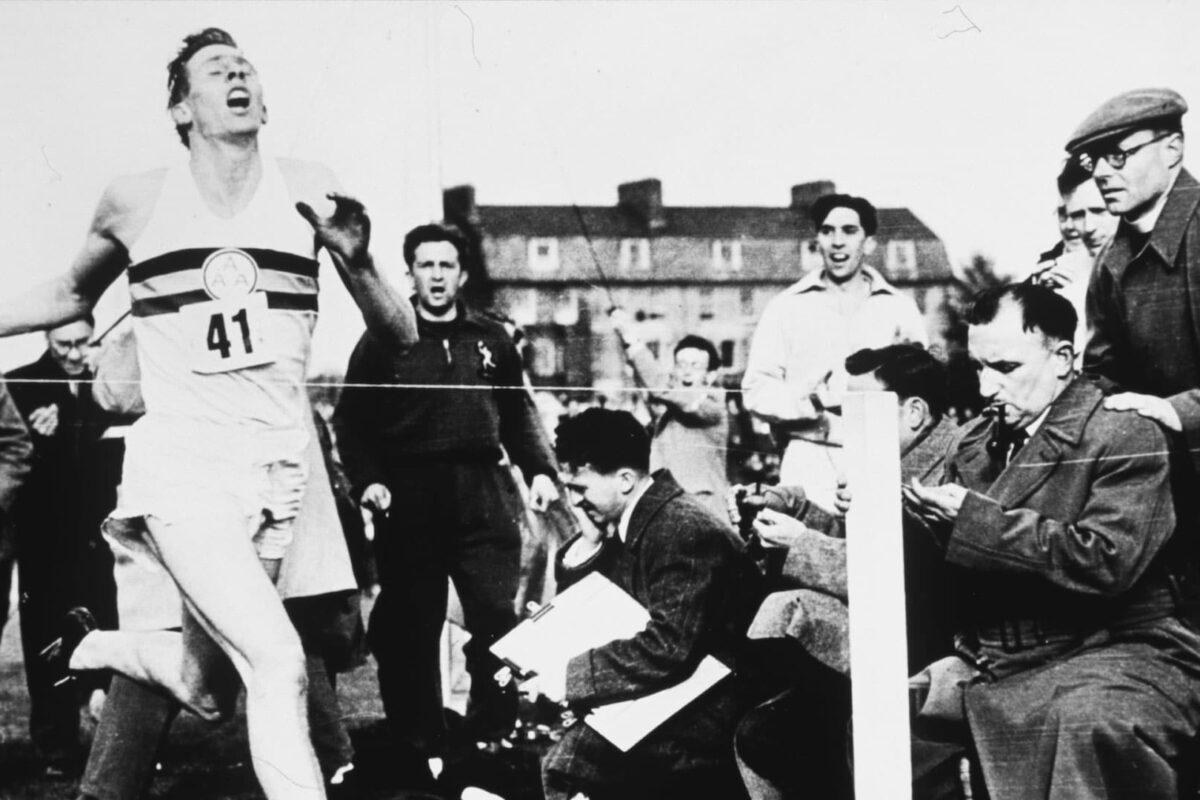From the 4-Minute Mile to Major Bets That Paid Off
Your ambitious goal isn’t impossible to accomplish. And the first step is dismissing the naysayers who tell you otherwise. Certainly, you shouldn’t think that you can defy Newton’s Laws of Physics or pretend that gravity doesn’t exist. You can, however, learn three priceless lessons from those who defied the skeptics:
1. Focus on realizing the “impossible”
These days, running a mile in under four minutes is noteworthy but relatively common. For the first half of the 20th century, however, athletes and others scoffed at the idea that it was even possible. As far as they were concerned, the human body couldn’t complete a mile in the required speed without falling apart.
But then in 1954, British medical student and middle-distance runner Roger Bannister ran a mile in under four minutes during a race at Oxford University. Even more amazing, Bannister did this in spite of being limited to just 45 minutes of practice each day between classes and hospital rotations.
Bannister took numerous steps to make the “impossible” possible. This included intense speed practices to build up endurance as well as running against others to get his times down.
But the most important step Bannister took started long before his feet hit the track: He visualized that a four-minute mile was possible. Seeing the possibility in his mind is one reason why Bannister declared, “It is the brain, not the heart or lungs, that is the critical organ.”
Decades later, scientists have proven Bannister right. Running expert Matt Frazier notes that the brain is equipped with something called a reticular activating system. It helps us each of us decide what to focus on and what to ignore. Once you train your brain to focus on a well-defined goal, you will filter out skepticism from others as well as from yourself.
One way to help your mind focus is by thinking through the goal itself, whittling it down to its essence. Another way to achieve focus is to organize yourself before you start your day.
This means setting up a list of your priorities, reviewing the following day’s schedule and creating the time needed to do the work required to make the impossible happen. You must also transform your own self-doubt into a tool for the learning you will need to achieve your goal.
“It all begins in the mind,” writes my former boss at National PTA, Byron Garrett, in his children’s book, There’s Greatness on the Inside. Once you visualize and focus, even the seemingly “impossible” is achievable.
2. Develop a plan of possibility
Bill Strickland shouldn’t have made it out of poverty, much less become the founder of one of the best-known social programs for improving the lives of urban youth. Yet the MacArthur Genius grant recipient made it happen.
In 1968 while attending undergrad at the University of Pittsburgh, Strickland built Manchester Bidwell Corporation into a force in his hometown, working with companies such as Kraft-Heinz to help thousands of teenagers and adults emerge out of poverty by becoming artists, musicians, chefs, and pharmacy technicians.
Strickland visualized his way to achieving his “impossible.” He also had a plan. As Strickland explains in a lecture to students at Harvard Business School, “You have to create an environment that allows you to sustain the passion in whatever form that takes.”
Planning for the impossible begins by focusing your mind and organizing your life. It also involves thinking through all the concrete steps that you must take. In television news, event planning, and project management circles, this comes in the form of planning backwards, starting with the goal and a deadline for its achievement, then working backward to map out the necessary schedules, steps, and resources.
Another ingredient is demonstrating your thinking and planning to the core group of supporters and who can help you along the way. Silicon Valley billionaires did this all the time in their pitches to venture capitalists.
But the practice, of course, is much older than Facebook. John Roebling, the engineer who built one of our most famous landmarks, did this by crafting a report to potential funders that outlined how the span would be built as well as demonstrated the thought and expertise he put into the proposal. He literally sold them on that bridge in Brooklyn.
3. Stick to the goal for the long term
All these examples demonstrate the last lesson: An ambitious goal cannot be achieved if you don’t stick with it. Like the old saying goes, “The Difficult is that which can be done immediately; the Impossible that which takes a little longer.”
One way to stay the course is to constantly visualize your goal as you did when you first started out to achieve it. By visualizing it, you can think about what the achievement can look like and get excited for the future. Staying connected to your why also matters. What is your deep, compelling reason for achieving this goal? Another step lies in looking at your plan, revising steps when they may be dead ends or don’t bring you closer to achievement.
Finally, you should follow the old investment adage of buying and holding your ambition. This means not getting sidetracked by new goals and dreams that can get in the way. Save those for the far side of impossible.
Disclosure of Material Connection: Some of the links in the post above are “affiliate links.” This means if you click on the link and purchase the item, we will receive an affiliate commission. Regardless, we only recommend products or services we use and believe will add value to our readers. We are disclosing this in accordance with the Federal Trade Commission’s 16 CFR, Part 255: “Guides Concerning the Use of Endorsements and Testimonials in Advertising.









